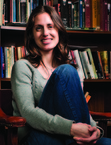Mary Volmer's Blog, page 4
June 22, 2016
History's Lost Voices: Historian Wendy Hamand Venet
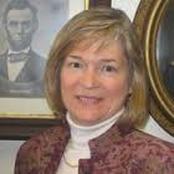 In the last blog of the series I introduced you to the phenomenal Mary Livermore, a nineteenth century abolitionist, reformer, suffragette and journalist. Today I have the great pleasure of introducing the scholar whose work brought Mary Livermore, the Civil War, and the Reconstruction era alive for me: Professor Wendy Hamand Venet.
In the last blog of the series I introduced you to the phenomenal Mary Livermore, a nineteenth century abolitionist, reformer, suffragette and journalist. Today I have the great pleasure of introducing the scholar whose work brought Mary Livermore, the Civil War, and the Reconstruction era alive for me: Professor Wendy Hamand Venet.Wendy Hamand Venet’s interest in women’s history began in childhood in the 1960’s. “I read all the biographies of women that I could find in the local public library. Unfortunately,” she said, “there were very few stories about women available at that time.” She has spent the greater portion of her academic life trying to fill these wide gaps in the historical record.
In her own words:
As an undergraduate and graduate student, I pursued the study of women's history and became intrigued by the connections between the antislavery and women's rights movements. My doctoral dissertation (later my first book called Neither Ballots nor Bullets ), focused on antislavery women during the Civil War. I found that Civil War activism led some women toward public careers as women's rights activists in the postwar period. Mary Livermore was one such individual, and I decided to make Livermore the subject of my next book. A Strong-Minded Woman: The Life of Mary Livermore was published in 2005. I have been pleased by the response to this book. One of my goals was to restore this important figure to the place of importance she held in her lifetime. I have received emails and letters from students and interested readers who have come to understand that the women's rights movement involved far more than the partnership of Susan Anthony and Elizabeth Cady Stanton. Several years ago, the White House Historical Association contacted me. Seeking to commission a painting featuring Abraham Lincoln and a Civil War woman, Association leaders selected Mary Livermore after reading my book.
A Strong Minded Woman is an engrossing book—a well told story of a life and time. I recommend it to anyone interested in Civil War and Reconstruction history, and specifically in the contributions of women. Also, please check out Venet’s other books: Neither Ballots nor Bullets: Women Abolitionists and the Civil War (University of Virginia Press, 1991) and most recently A Changing Wind: Commerce and Conflict in Civil War Atlanta (Yale University Press, 2014). She speaks about the Civil war on PBS, NPR and is the co-editor of The Union in Crisis , 2nd ed. and Midwestern Women: Work, Community, and Leadership at the Crossroads.
Thank you Dr. Venet for writing the stories of our foremothers and offering a more complete and intriguing picture of history!
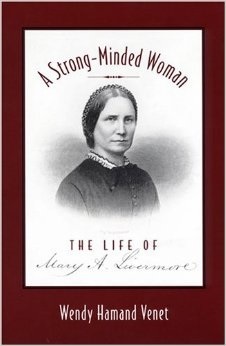
Next Blog Post: The outspoken Eliza Farnham, abolitionist, novelist, activist for prison reform, and outspoken feminist.
Published on June 22, 2016 11:55
June 11, 2016
History's Lost Voices: Mary Livermore
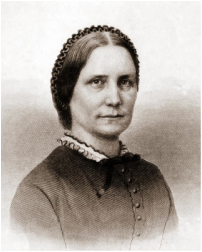 ,History’s Lost Voices: 19th Century Women Writers and Reformers
,History’s Lost Voices: 19th Century Women Writers and Reformers Recorded history overwhelmingly privileges men and affairs of state. It takes a special effort to unearth contributions of women who have long been relegated to the periphery of public life. This blog series will feature short biographies of remarkable, and largely forgotten, writers and reformers I discovered while working on Reliance, Illinois. It will also feature well-deserved shout-outs to historians and scholars who do the hard work of resurrecting the lives and legacies of these women. For how can women know themselves, or find their voices, without having known the voices and struggles of women who came before. Enjoy!
Mary Ashton Rice Livermore
I’m writing now from Chicago, so it’s fitting I begin with onetime Chicago resident Mary Livermore, one of the most fascinating and influential American women you’ve never heard of. Born in 1820 in Melrose, Massachusetts, Mary Livermore was a journalist, abolitionist and women’s rights advocate. During the Civil War she was co-director for the Northwestern branch of the United States Sanitary Commission and organized the Northwestern Sanitary Fair, raising no less than eighty-six thousand dollars for the Union effort (over twenty-million dollars today). After the Civil War she transferred her energies to the suffrage and women’s rights movements, founding the influential reform journal The Agitator, which merged with Woman’s Journal in 1872.
What fascinated me about Mary Livermore—apart from her delightfully opinionated books like What Shall We Do With Our Daughters? and Other Lectures—is how profoundly her attitude toward suffrage changed after joining the Sanitary Commission. While she had always worked for social reform alongside her husband, a Universalist minister, she was not, at first, committed to women’s suffrage. Her experiences organizing the Northwestern Sanitary Fair, and administrating what amounted to a national distribution system, supplying Union troops with food, medical supplies and other necessities, convinced her that women deserved a place in government, and that their active participation was necessary to achieve substantial reform. After the war she lectured widely, arguing for suffrage and for temperance; she appears in my novel (one of the few real historical figures to do so) on her way to one of these engagements.
But please do not consider my fictional portrayal an authentic portrait! Her cameo in my book is brief, and we learn of her through the decidedly biased eyes of Miss Rose. Livermore’s inclusion in the novel serves dramatic rather than biographical purpose. Her presence allowed me to dramatize the divide in the suffrage movement after the Civil War (and to heighten the tension in the novel between Miss Rose and Mrs. French). The long history of the women’s rights movement has never been one of peaceful unity. No diverse group of reformers, however committed, agree on how to approach reform, or even the kinds of reform necessary. The first wave of suffragettes were no different.
If you wish to learn more about Mary Livermore (I hope you do!) I heartily recommend Wendy Hamand Venet’s A Strong Minded Woman: The Life of Mary Livermore .
Next Post: Historian Wendy Hamand Venet
P.S.
I wrote the first post in this series at a beautiful little bookstore in Chicago, off Milwaukee Avenue, called Volumes Bookcafe. The store is brightly lit, stylishly appointed, with plush chairs, good sized tables, and a coffee bar to fuel the fits of inspiration that visits book people in such places. Sisters Kimberly and Rebecca George opened the store a little over two months ago and, judging from the steady stream of people though the door, the future is promising. It’s a beautiful space to read or work. I wandered in, bought a coffee and Viet Thanh Nguyen’s The Sympathizer, and settled in to write. If I’m in Chicago again, I’ll be sure to visit on purpose!
The store is on 1474 N Milwaukee Avenue in Chicago. Check it out! - MV
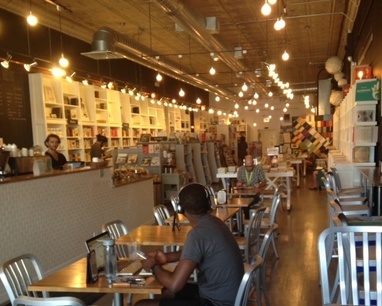
Published on June 11, 2016 20:06
May 7, 2016
By Stories I Know You

A Mother's Day tribute to my mom and the stories we share on bookreporter.com .
Mom grew up the daughter of ranch workers, a hardscrabble, nomadic existence in northern Nevada and California. In fifth grade she moved three times, attending three different schools in and around the head waters of the Humboldt River, a high plateau spotted by sagebrush and marked by wide open skies that felt, some nights, close enough to touch. The one constant, beyond hard physical work, were the books her mother bought on rare trips to town. A box of books traveled with them place to place --- a luxury, and one that kept her mother, my Nana, if not happy, then sane.
Read the rest on bookreporter.com
Published on May 07, 2016 21:29
April 6, 2016
Interview for RELIANCE, ILLINOIS in Shelf Unbound Magazine!
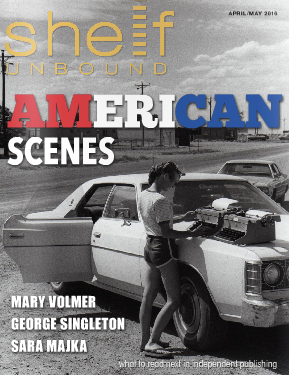 Check out this interview on my forthcoming novel, Reliance, Illinois in
Shelf Unbound
. Such great questions!
Check out this interview on my forthcoming novel, Reliance, Illinois in
Shelf Unbound
. Such great questions! From Shelf Media: In this highly charged political season, the disparate views of what America is and what it should be are writ large. In our newest issue, we're staying away from blue states and red states and the arcane rules of brokered conventions but instead taking a look at scenes from America as imagined by a handful of novelists.
Discover authors Mary Volmer, George Singleton, Sara Majka, & many more in our April/May issue: http://bit.ly/1YehFjE
Published on April 06, 2016 21:18
September 6, 2015
Sage Advice for Traveling with a Toddler
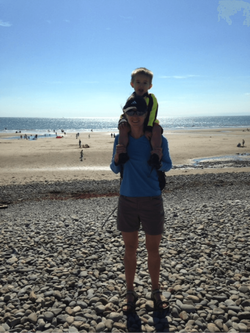 Sage Advice for Traveling Abroad with a Toddler
Sage Advice for Traveling Abroad with a ToddlerBy Mary Volmer (Published in the Travel Talk section of WorldLeap.Co)
1) Don’t.
2) Unless you have a very good reason to fly with a toddler, please don’t. If you must fly with a toddler, be prepared. Pack snacks, treats, a change of clothes (for both of you), books, games. Consider easing usage limits you may have against electronic entertainment. (The iPad is your friend). Purchase as much understanding as you can from your nearest neighbors with gift bags. Put inside ear plugs, candy, Advil, one (or two) of those little glass bottles of hard liquor, and a note:
“Dear bearded, tattooed stranger in the seat in front of me, my name is Joe. I’m two. I’m on my way to visit my Grandma in England. I’ll try to behave but eleven hours is long time. I’m sorry in advance for barfing, chair kicking, and screaming fits. Oh, and for peering over your seat to say BOO, one too many times, and for anything else that might make your already long and uncomfortable flight, less comfortable.
Helpful information: Yes, you will have to buy Joe his own seat. No, he won’t want to sit in it. Yes, he will scream when forced to strap in during take-off and landing. (On a positive note that extra seat is a great place to store the snacks, iPads, books, crayons, sticker rolls, etc. you’ve brought along to keep Joe busy.)
3) In “Family Values”, a recent article about traveling with children in British Airway’s High Life Magazine, author Emily Payne cheerfully argues, “Traveling with children doesn’t have to mean compromise.” With all due respect, bull. Traveling with children does mean compromise, especially traveling with young children. Their needs won’t evaporate on your way to the England, or, the Bahamas. And meeting their needs will take more forethought and planning abroad. Will you need diapers, a crib, medicine, special foods? Some of your travel plans will take second place to these considerations. Understand this before you go. Travel with reasonable goals, flexible plans, and invest in a good sense of humor.
4) Less is best. As a fancy free single (or childless couple) you might have wandered London, visited seven attractions in a day, ate a late dinner, fell into bed at dawn after dancing and drinks with that Austrian dude and his cousin with the funky nose ring. This time around, plan to see one or two attractions (providing one of the attractions is a park where Joe can chase pigeons; Joe really likes to chase pigeons). Know where you’re going. Bring a map, extra diapers, a change of clothes, enough snacks to feed the Roman army, a stroller (though he won’t want to ride in it). If you can, factor naps into the day’s plan. Joe will be happier for it, and if Joe’s happier…
Keep in mind that at two-years-old, everything is at once exotic and ordinary. There is little difference between. You don’t have to manufacture or seek out new experiences for your toddler. The Tower of London and the National Portrait Gallery won’t mean anything to him until he’s ten or eleven. Right now, anywhere with pigeons and ice cream will do.
So, slow down. Said Epictetus, in The Handbook, “let some things go completely, and postpone others for the time being.” He was not speaking to parents of toddlers explicitly, but he might as well have been. Cross the Natural History Museum off your list. Sit in the park and eat ice cream.
Understand that a good traveler cares more about the quality, than the quantity of her experiences. For the parent of a toddler, quality is achieved through a newly layered awareness. You learn to observe the world through two sets of eyes: your own, drawn to domes and archways and vistas, and your child’s who will discover smaller miracles nestled in the cracks of the wonders you traveled to see. A small, toy tractor on the steps of St. Paul’s Cathedral. A squirrel climbing the branches of a tree in the Queen’s garden. Engaged in this pleasant double vision, you will enjoy a richer and more satisfying experience, even if you see less.
5) Find time alone. Remember the very good reason you had for traveling abroad with a toddler in the first place? That’s right: Grandma, Grandpa, and the Yorkshire cousins. They are your ticket to time away to engage in the kind of unfettered wanderlust that characterized your travels before Joe. Don’t feel you are abandoning the family if you take off for a few hours, or a day, to sightsee without him. He’ll be fine, and so will Grandma. (Really, it was Joe she wanted to see, anyway). It will do you good to sluff off that double vision for time, to look inward and regain a sense of self, independent of your family. There is no better way to do this, even if you are the parent of a toddler, than by traveling.
6) About that eleven hour flight home? Good luck.
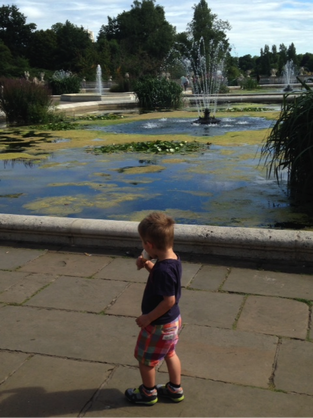
Published on September 06, 2015 14:25
February 13, 2015
A Short History of My Breasts
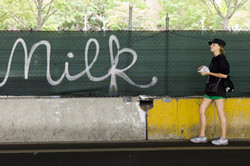
They’re called tits, titties, boobs, breasts, hooters, hahas, bosoms, the focal of point of male fantasy, of fashion (high and low) admired, but, for all the wrong reasons. Call me envious of the well-endowed. Okay, I am a little. But for most of my youth I embraced a kind of athletic androgyny: strong, active, my breasts little more than perky mosquito bites stranded between ribs. Nothing to look twice at. So imagine my surprise, when two years ago, I became pregnant and my breasts grew to assert themselves.
Everything grew, of course. Grew and overgrew, out of my control, or, the illusion thereof. But my breasts were the first and most obvious sign of the changes to come. I wish I could say I enjoyed their new girth, but I was too sick the first trimester to enjoy anything, too high on hormones in the second to notice, and too fixated on the baby bump in the third to give the girls much thought. (That’s what I call them now, girls. Hard-working, anonymous, girls.)
After giving birth, my breasts, larger than ever, expressed loyalty only for the needy human clamped on my nipple. What a shock to discover how supremely unconcerned my breasts were with my needs (much less the needs of my hubby, poor guy. Now that there was finally something to hold on to, they weren’t his to hold.) If I failed to eat enough, or take in enough calcium, my breasts would happily strip my body of these resources to feed my baby. This is not to say baby and breast always got along well together...
Read the rest at MUTHA Magazine
Photo credit: Atomische / Tom Giebel (flickr/creative commons)
Published on February 13, 2015 20:55
July 17, 2014
WE Are Not Pregnant
One day I suggested to my husband that “maybe it would be okay if we tried.” I could have been talking about sushi, or skydiving, or lunar travel. Something safe and final. But the man’s face lit up with unambiguous joy.
I use the word “we” lightly here, because let’s face it, my husband and I were not, and would never be, pregnant. I would be pregnant. I would be sick on the couch, eating saltines, staring at a cursor blinking on an unfinished scene of my unfinished novel. The flu, I told my students, hives, pneumonia—anything to keep my condition secret until it appeared the condition would stick. I was the one subject to the probing hands of doctors, to needle pricks, and bloodletting. I was the one banned from alcohol, coffee, cold cuts, hot tubs, and yes, sushi, skydiving and lunar travel.
Read more of this essay on Mutha Magazine
I use the word “we” lightly here, because let’s face it, my husband and I were not, and would never be, pregnant. I would be pregnant. I would be sick on the couch, eating saltines, staring at a cursor blinking on an unfinished scene of my unfinished novel. The flu, I told my students, hives, pneumonia—anything to keep my condition secret until it appeared the condition would stick. I was the one subject to the probing hands of doctors, to needle pricks, and bloodletting. I was the one banned from alcohol, coffee, cold cuts, hot tubs, and yes, sushi, skydiving and lunar travel.
Read more of this essay on Mutha Magazine
Published on July 17, 2014 10:02
December 10, 2012
A Few Thoughts on Marilynne Robinson's HOME
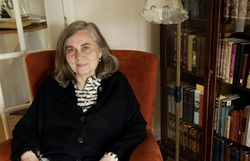 Ever since a friend gave me a tattered copy of Housekeeping, I’ve been a fan of Marilynne Robinson. All of her work, fiction and nonfiction, is driven by a singular intelligence and bolstered by a sober brand of faith I can only envy. Her collection of essays, The Death of Adam, is the best, which is to say the only, defense of Calvinism I have ever read. Her latest novel, Home, reflects an equally cerebral, but more restrained preoccupation with religious convention, and with faith and its limits.
Ever since a friend gave me a tattered copy of Housekeeping, I’ve been a fan of Marilynne Robinson. All of her work, fiction and nonfiction, is driven by a singular intelligence and bolstered by a sober brand of faith I can only envy. Her collection of essays, The Death of Adam, is the best, which is to say the only, defense of Calvinism I have ever read. Her latest novel, Home, reflects an equally cerebral, but more restrained preoccupation with religious convention, and with faith and its limits.In Home, Robinson rewrites the trope of the redeemed prodigal. When Jack returns home seeking forgiveness from God, from his father, and to a lesser extent from his sister Glory, redemption is not the result. Jack mourns his transgressions but has no recourse with which to atone them. He is born with a deviant disposition and is destined, first to flee the consequences of youthful transgression, and failing that, to blind himself, through drink, to the suffering he has inflicted. Really, the story has as much the feel of a Greek tragedy as a biblical allegory. We mourn Jack as we mourn Sophocles’ Oedipus, not because we admire or feel tenderly toward him, but because we fear that we, too, will ever be trapped in the choices and patterns of life that shaped our pasts.
By rewriting the trope of the prodigal in this way, Robinson refuses to limit the human experience to an easily digestible morality tale. She resists presenting religion as a palliative, and as a result reveals the greater mystery of a faith, which can neither be adopted nor discarded by will, or by logic--a mystery that fills that void between human understanding and divine grace. Robinson is not dismissive of Jack’s efforts, or his pain. His fate does not denote a wasted or a useless life. After all, he leaves behind a son with a chance of happiness. Instead, when Jack dies Robinson allows us the freedom to mourn his moral failings, and by extension, our own. Through Jack we are asked to recognize that unhappy and irredeemable men are, after all, still men and, however anguished, still deserving of love. What more, Robinson asks, can we reasonably expect of salvation?
Published on December 10, 2012 08:42
September 13, 2012
San Francisco Litquake
 San Francisco Litquake is just around the corner, and if I wasn't slated to give birth smack dab in the middle of the festivities I'd hop on a train, over the bay to relish these must see literary events.
San Francisco Litquake is just around the corner, and if I wasn't slated to give birth smack dab in the middle of the festivities I'd hop on a train, over the bay to relish these must see literary events. Oct 9 6:00, Hotel Rex 562 Sutter St.Austen à Go-Go: The Enduring Appeal of Jane Austen, featuring: Karen Joy Fowler, Sandy Lerner, Kirke Mechem, Elizabeth Newark
Oct 12 6:00, Verdi Club, 2424 Mariposa Street
Making the Skeleton Dance: Emceed by Litquake co-founder Jane Ganahl and the San Francisco Writers’ Grotto’s Elizabeth Bernstein, featuring: Anita Amirrezvani, Adrienne Arieff, Tiffany Baker, Lucille Lang Day, Bronwen Hruska, Deborah Michel, Janis Cooke Newman, Holly Lynn Payne, Elizabeth Weil
Oct 13 6:00, Forest Books, 3080 16th St.
Who Dunnit? Mysteries featuring: Cara Black, Tony Broadbent, Paul Goldstein, Kelli Stanley, and Barry Willdorf
Oct 13, 7:15, Carte Blanche Gallery, 973 Valencia St.
Squaw Valley Community of Writers featuring: Colleen Morton Busch, Andrew Foster Altschul, Seré Prince Halverson, Thad Nodine, Renée Thompson
And if you need something to wet your whistle before the festivities begin, try
Tacos and Tequila--A North Bay Literary Festival on September 23rd featuring: Michelle Richmond, Vikram Chandra, Jacqueline Winspear, Peter Orner and Alejandro Murguía (This one's at a private house so click on this link to find details)
Published on September 13, 2012 10:54
San Francisco Litquake
 San Francisco Litquake is just around the corner, and if I wasn't slated to give birth smack dab in the middle of the festivities I'd hop on a train over the bay to relish these must see literary events.
San Francisco Litquake is just around the corner, and if I wasn't slated to give birth smack dab in the middle of the festivities I'd hop on a train over the bay to relish these must see literary events. Oct 9 6:00, Hotel Rex 562 Sutter St.Austen à Go-Go: The Enduring Appeal of Jane Austen, featuring: Karen Joy Fowler, Sandy Lerner, Kirke Mechem, Elizabeth Newark
Oct 12 6:00, Verdi Club, 2424 Mariposa Street
Making the Skeleton Dance: Emceed by Litquake co-founder Jane Ganahl and the San Francisco Writers’ Grotto’s Elizabeth Bernstein, featuring: Anita Amirrezvani, Adrienne Arieff, Tiffany Baker, Lucille Lang Day, Bronwen Hruska, Deborah Michel, Janis Cooke Newman, Holly Lynn Payne, Elizabeth Weil
Oct 13 6:00, Forest Books, 3080 16th St.
Who Dunnit? Mysteries featuring: Cara Black, Tony Broadbent, Paul Goldstein, Kelli Stanley, and Barry Willdorf
Oct 13, 7:15, Carte Blanche Gallery, 973 Valencia St.
Squaw Valley Community of Writers featuring: Colleen Morton Busch, Andrew Foster Altschul, Seré Prince Halverson, Thad Nodine, Renée Thompson
And if you need something to wet your whistle before the festivities begin, try
Tacos and Tequila--A North Bay Literary Festival on September 23rd featuring: Michelle Richmond, Vikram Chandra, Jacqueline Winspear, Peter Orner and Alejandro Murguía (This one's at a private house so click on this link to find details)
Published on September 13, 2012 09:54

